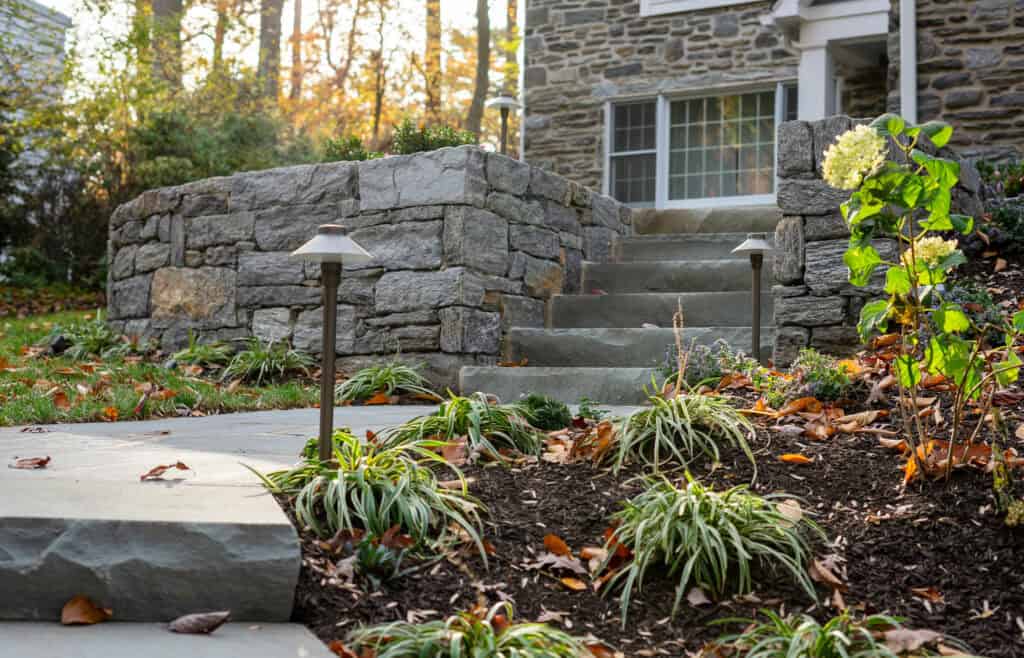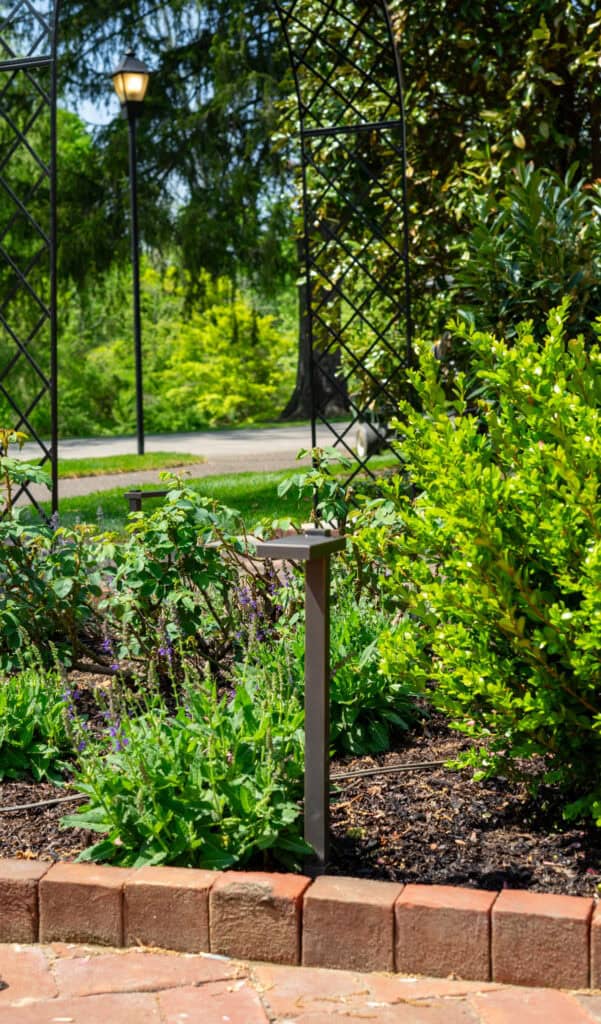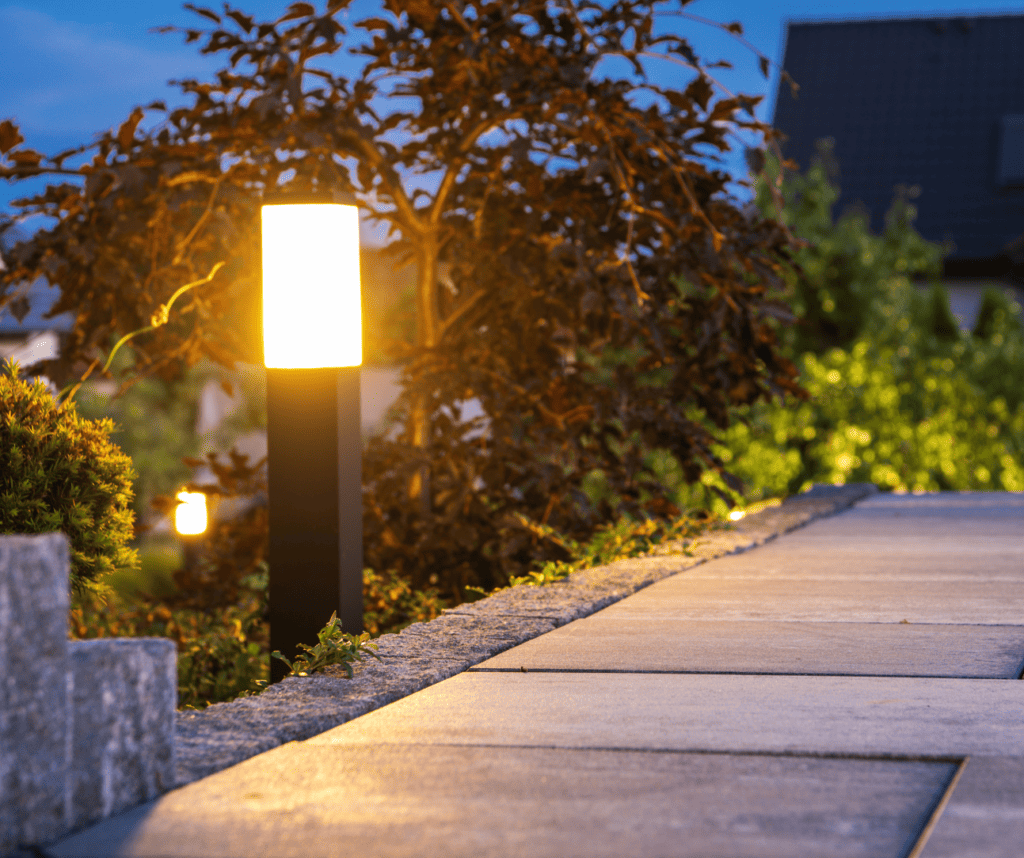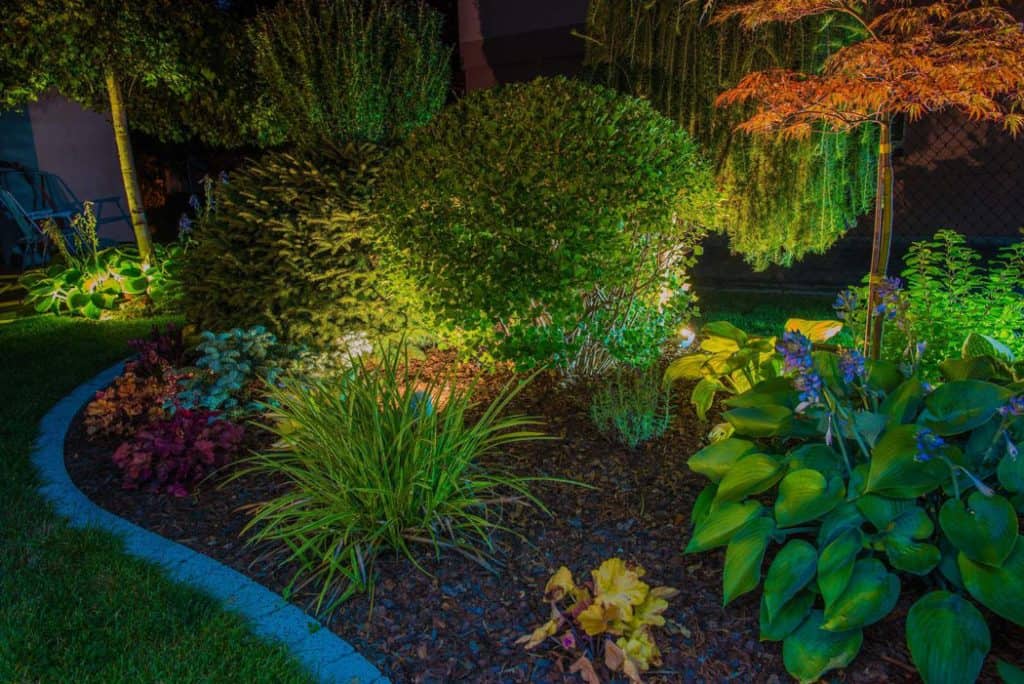Introduction: Why Outdoor Lighting Matters for Your Home
You’re standing in your backyard after the sun has gone down. It’s dark, and your beautiful patio, walkway, or garden disappears into the night. You’ve invested in your outdoor living space—so why let it fade into the background once evening hits?

If you’re like most homeowners in Main Line, Pennsylvania, you want your outdoor space to feel safe, welcoming, and usable—even after sunset. You might be considering lighting options, but you’re probably asking yourself: What kind of lighting should I use? Is it expensive? Will it be difficult to install or maintain? What are the pros and cons of low-voltage vs solar lighting?
These are real concerns. At Kelly Masonry, we specialize in high-end masonry and outdoor living spaces throughout the Main Line. We’ve helped hundreds of homeowners make the right lighting choices to complement their patios, walkways, retaining walls, and water features. Whether you’re looking to highlight your new flagstone path or create ambiance around your outdoor fireplace, we’ve got you covered.
In this article, we’re going to help you cut through the noise. We’ll explain what each system is, break down the pros and cons, and share real-world insights to help you make the best decision for your home. No jargon. No sales pitch. Just straight answers.
Let’s shed some light on your options.
What Is a Low-Voltage Outdoor Lighting System?
A low-voltage lighting system uses electricity from your home’s main power supply—but at a much lower voltage (typically 12 volts). It requires a transformer that converts your home’s standard 120V current down to 12V, which is then distributed through a series of wires to light fixtures placed throughout your yard.

You’ve probably seen these systems used in:
- Pathways and walkways
- Deck and patio lighting
- Uplighting trees or architectural features
Low-voltage lighting is known for its reliability, brightness, and flexibility.
What Is a Solar Outdoor Lighting System?
Solar outdoor lighting doesn’t require any wiring or electricity from your house. Instead, each light has a built-in solar panel that captures sunlight during the day and stores it in a battery. At night, the stored energy powers the light.
You’ve likely seen solar lights lining driveways, garden paths, or stuck into flower beds. They’re popular because they’re:
- Easy to install (no wiring!)
- Energy efficient
- Environmentally friendly
But just because they’re simple doesn’t mean they’re always the best fit. Let’s compare the two systems side by side.
Low-Voltage vs. Solar Outdoor Lighting: Key Differences
| Feature | Low-Voltage Lighting | Solar Lighting |
|---|---|---|
| Power Source | House electricity (via transformer) | Sunlight (via built-in solar panels) |
| Installation Difficulty | Moderate (requires wiring) | Easy (just stake and place) |
| Light Brightness | Bright and consistent | Softer, varies by sun exposure |
| Reliability | High (always on when needed) | Weather dependent |
| Maintenance | Occasional bulb/wire checks | Battery replacements over time |
| Cost (Initial) | Higher upfront | Lower upfront |
| Long-Term Cost | Stable, low operating costs | No energy cost, but battery replacements |
Pros and Cons of Low-Voltage Outdoor Lighting
✅ Pros:
- Consistent Brightness: You get dependable light output, no matter the weather.
- Customizable Design: Easily light up specific features with focused fixtures.
- Professional Aesthetic: Looks clean and upscale when installed correctly.
- Long Lifespan: Durable, weather-resistant fixtures last for years.
❌ Cons:
- Installation Requires Expertise: You may need a contractor to do it right.
- Initial Cost: Equipment and labor can be a higher upfront investment.
- Power Dependency: Outages can affect performance (though rarely).
Pros and Cons of Solar Outdoor Lighting
✅ Pros:
- Easy DIY Setup: No digging or wiring needed.
- Zero Energy Bills: Runs entirely on free solar power.
- Environmentally Friendly: Reduces your carbon footprint.
- Great for Temporary Use: Ideal for seasonal or rental properties.
❌ Cons:
- Light Output Varies: Cloudy days = dim or no light.
- Battery Wear: Rechargeable batteries may need replacing every 1–2 years.
- Limited Control: Many solar lights automatically turn on/off with no timer or switch.
- Aesthetic Limitations: Most models are simple in design and may not match premium outdoor spaces.
Cost Comparison: Solar vs. Low-Voltage Lighting Systems
Solar Lighting:
- Average fixture: $10–$50 each
- Total install cost: $100–$500 (DIY)
- Battery replacement every 1–2 years: ~$5–$20 per light
Low-Voltage Lighting:
- Transformer: $100–$300
- Fixtures: $50–$150 each
- Professional installation: $1,000–$3,000 (varies by project size)
- Low ongoing electricity cost
💡 Pro Tip: While solar is cheaper upfront, low-voltage may offer better long-term value and fewer headaches if you plan to stay in your home for several years.

Performance and Reliability: Which One Lasts Longer?
Low-voltage lighting is more reliable in all weather conditions. Rain? Snow? Cloudy days? No problem. Since it runs on your home’s electrical system, it’s consistent year-round.
Solar lighting’s performance depends heavily on sun exposure. If your yard has a lot of shade or cloudy weather, the lights may not charge fully—or at all.
Over time, the batteries in solar fixtures degrade, meaning you’ll eventually get less light for shorter periods unless you replace them.
Design Flexibility and Aesthetic Impact
If you want to highlight architectural features, trees, fountains, or other focal points in your yard, low-voltage wins hands down. You can use different beam angles, brightness levels, and fixture styles to create a tailored design.
Solar lights come in fewer styles and tend to give off a soft, ambient glow. Perfect for subtle path lighting, but not ideal for showcasing landscape details.
Think of solar lights like glow sticks—they’re fun and functional in the right setting, but not a lighting design statement.
Installation and Maintenance: What You Need to Know
Low-Voltage:
- Requires trenching and wiring (best done by a pro)
- Needs a transformer placed near an outlet
- Occasional maintenance of wires and bulbs
Solar:
- Insert into the ground and go
- Periodic cleaning of panels for max efficiency
- Battery changes every few years
Want a quick weekend project? Go solar. Want a permanent, high-impact solution? Go low-voltage.
Best Use Cases for Low-Voltage Lighting
- Highlighting trees, architecture, water features
- Creating dramatic landscape designs
- Lighting up large areas or long walkways
- Homes with frequent entertaining at night
Best Use Cases for Solar Lighting
- Quick lighting for paths or driveways
- Seasonal decorations or temporary setups
- Renters or those who move often
- Spaces that get full sun exposure all day

Which Outdoor Lighting System Is Better for Your Home?
There’s no one-size-fits-all answer—but there is a right fit for you.
- Want a durable, long-lasting system with precise design control? Go with low-voltage.
- Looking for a budget-friendly, easy-to-install option? Solar could be the way to go.
Still not sure? That’s okay. Reach out to a trusted contractor like Kelly Masonry—we’ve been helping Main Line homeowners create elegant, functional outdoor living spaces for years. Whether you’re adding lights to an existing patio or designing a full backyard transformation, we can help you do it right the first time.
FAQs About Outdoor Lighting Systems
Q: Can I mix low-voltage and solar lights?
A: Absolutely. Many homeowners use solar lights for quick accents and low-voltage systems for feature lighting.
Q: Are low-voltage systems safe?
A: Yes. The 12-volt system is much safer than traditional 120V and safe to use around children and pets.
Q: Will solar lights work in winter?
A: Only if they get enough sunlight. Snowy, cloudy days reduce charge time.
Q: How long do these systems last?
A: Low-voltage fixtures can last 10+ years. Solar lights often need battery replacements every 1–2 years.
Final Thoughts: Choosing the Right Outdoor Lighting for Long-Term Value
Outdoor lighting isn’t just about visibility—it’s about safety, curb appeal, and extending your living space beyond four walls.
Whether you choose a plug-and-play solar system or invest in a professionally installed low-voltage design, the key is choosing what works best for your space and your lifestyle.
Still unsure? That’s what Kelly Masonry is here for. We’ve helped hundreds of Main Line homeowners make the right choice—and we can help you too.
Ready to light up your outdoor space? Visit KellyMasonryMainline.com or contact us for a free consultation today.
